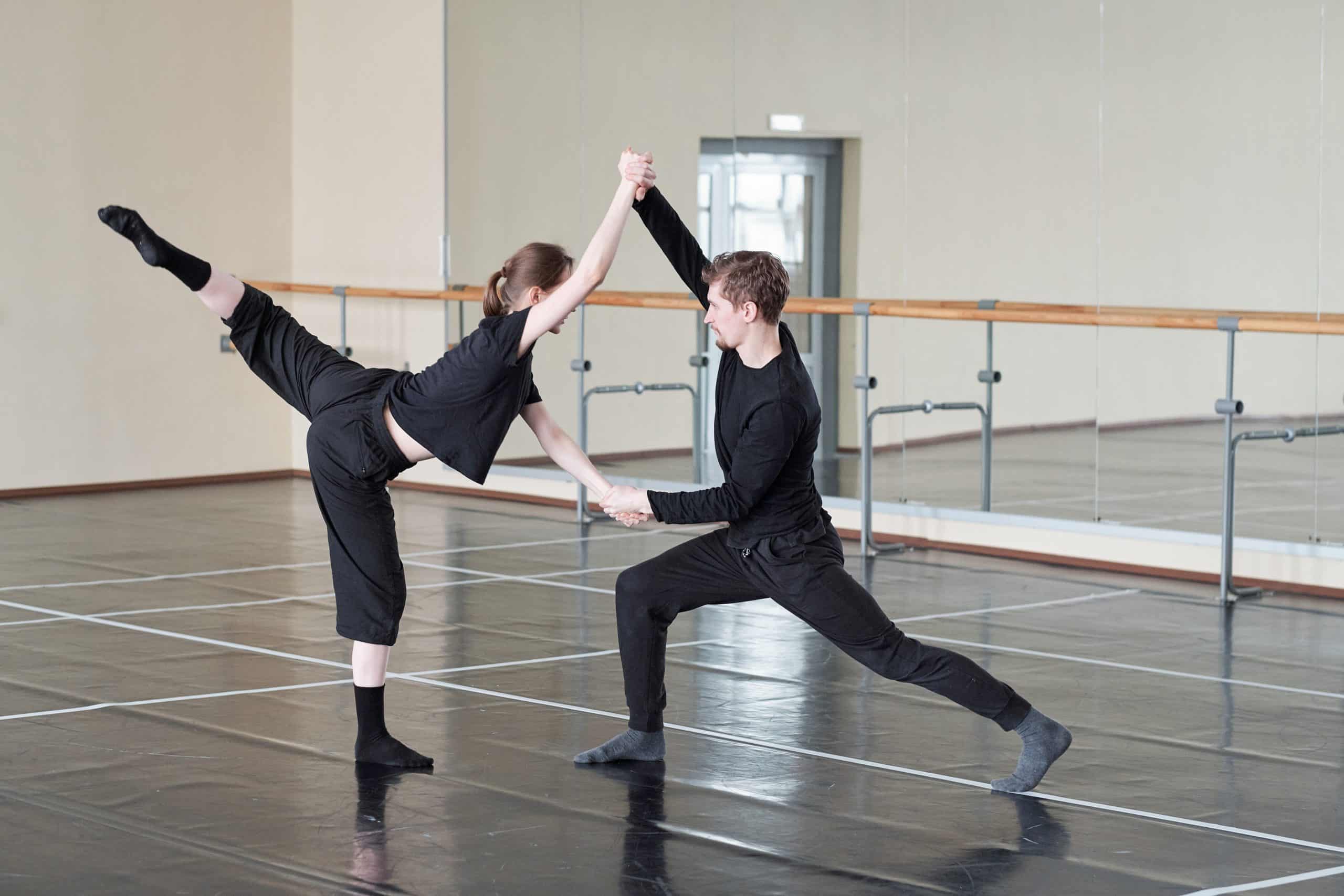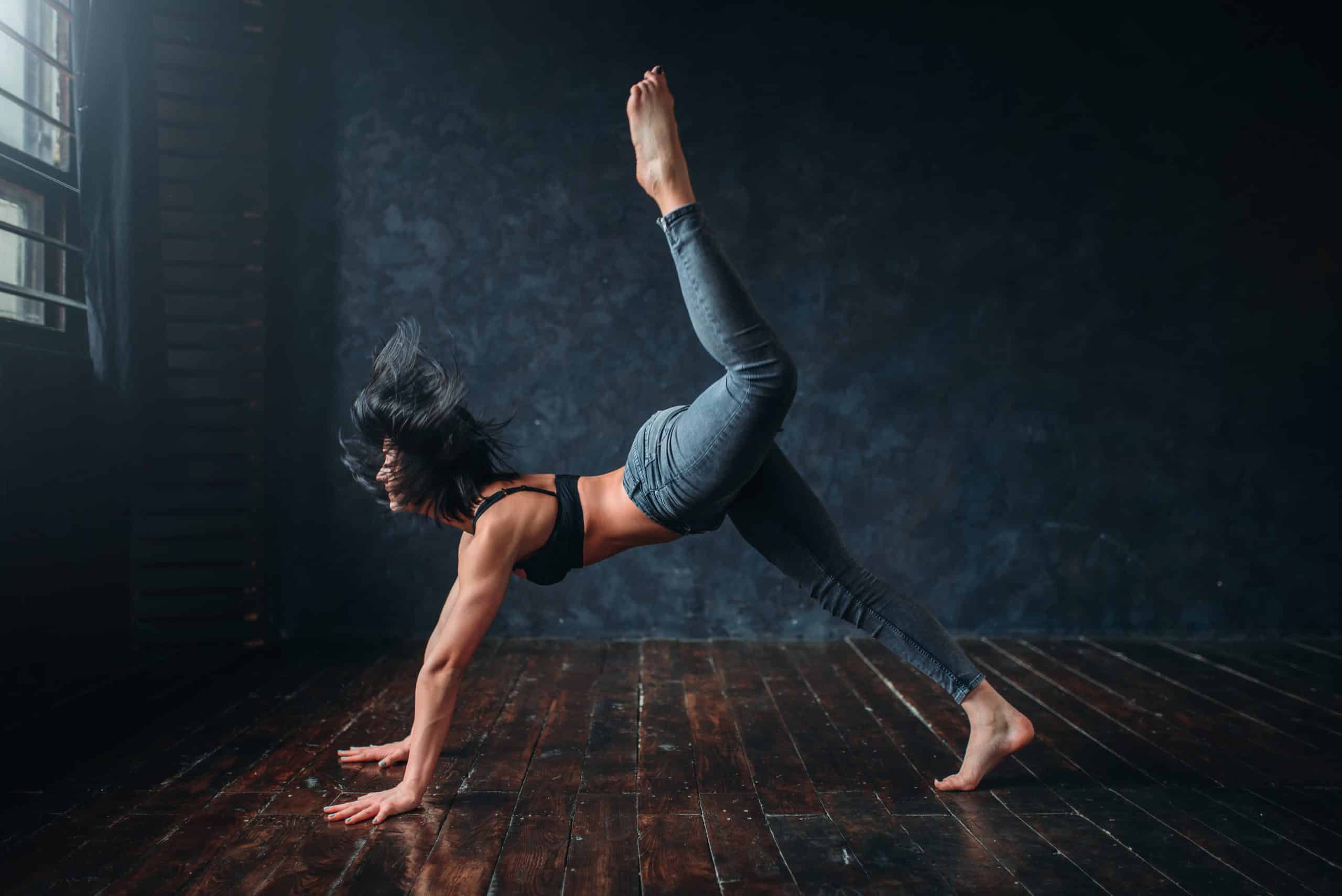Blog
What is Contemporary Dance? Guide to Contemporary Dance
Find out more about contemporary dance and it's key features, how it started and more in Harlequin Floors' contemporary dance guide.
25.05.2021
What is contemporary dance?
Contemporary is an important genre of dance performed in societies around the world, celebrated by people both young and old. Developed during the 20th century, contemporary dance involves incorporating aspects of movement from several other genres such as jazz, modern and ballet. While contemporary is a popular type of dance worldwide, it is most common amongst the U.S and European countries.Key features of contemporary dance
Unlike traditional forms of dance, contemporary is considered to be somewhat unbound by much rigidity and rules. The dancers of this genre have the ability to transform a performance based on their own interpretations. This is achieved through honing in on certain techniques, such as focusing on strong ballet-influenced leg movements, fall and recovery, floor work and further improvisational elements. More frequently than not, contemporary dance is performed barefoot to allow for more fluidity in movement and connection to the dance surface. One of the most important aspects of contemporary dance is the element of improvisation. While some forms of dance such as ballet can be quite rigid and structured, contemporary dance relies on fluidity and improvisational movement to evoke a range of feelings in the viewer. It also offers the dancer ultimate creative freedom to perform an emotive piece that identifies with them. Modern-day contemporary dance is incredibly interpretive and has many applications. While traditional dance performances are still popular, contemporary dance has often been used in art, theatre, music videos, movies and more. The versatility of the genre allows the dancer to use the influence of a storyline and music to form characters and entire theatrical performances that stray away from the more traditional methods of storytelling.
When did contemporary dance start and who created it?
While we can’t say that contemporary dance was started by any particular individual, there were several key pioneers to this movement. As previously mentioned, modern dance truly took off during the 20th century. Previously, theatrical dance performances were mostly limited to ballet, which was popular throughout Europe and the US at the time. This slowly began to change, with renowned dancers of the time beginning to move away from the methods of traditional ballet. Undoubtedly the most prolific contributor, Merce Cunningham is an American choreographer and dancer who was at the very forefront of American modern dance for over half a century during the 1900s. His early choreography pushed the boundaries of modern dance and attempted to bridge the gap between music and dance. Over the years, his technique developed to be referred to as the Cunningham Technique, which was specifically used to train dancers for his company. This refined technique brought together several key elements of contemporary dance, such as torso and legwork coordination, spatial awareness, rhythmic accuracy and erratic changes in speed and direction. Other well known names in contemporary dance include Isadora Duncan, Jose Limon, Ruth St. Denis and Alvin Ailey.
Can you teach yourself contemporary dance?
If you’re looking to learn contemporary dance at home, there is a huge amount of online content to help, including walkthroughs, tutorials and video guides. However, in order to learn proper form and technique, you may want to join a reputable local dance class or dance studio that teaches contemporary dance. That way you can be sure you are receiving proper training and feedback on your dancing from a professional. Having a trained instructor will also help open you to other opportunities depending on your ability, such as qualifications, certifications and competition and performance opportunities. Whether you are learning contemporary dance at home or receiving more formal training it is important that you warm up properly and have the right equipment. Harlequin Floors offer professional performance and dance floors perfect for practising contemporary dance, whether you are in the studio or at home. Browse through our range of sprung floors and vinyl floors for more information on our permanent and semi-permanent installations. Alternatively, if you would like to practice on the go, we offer home practice products including everything from dance practice mats to portable ballet barres.Contact us
Take the first step
Contact one of our experienced team and we’ll find the best solution for you. Connect with us by phone or email or for an instant response please click on our live chat.
Tel: +852 254 11 666






















